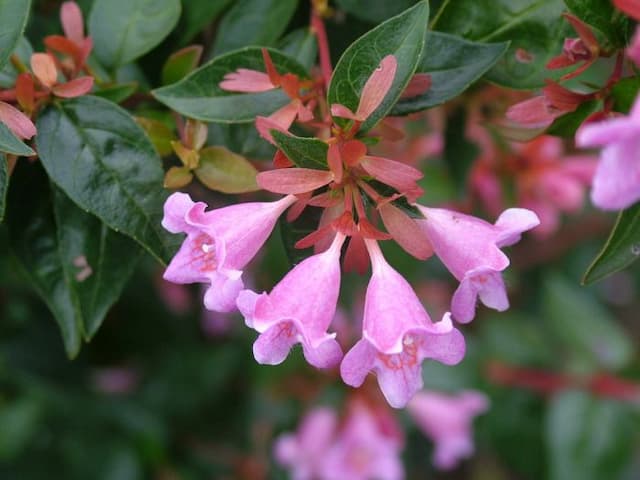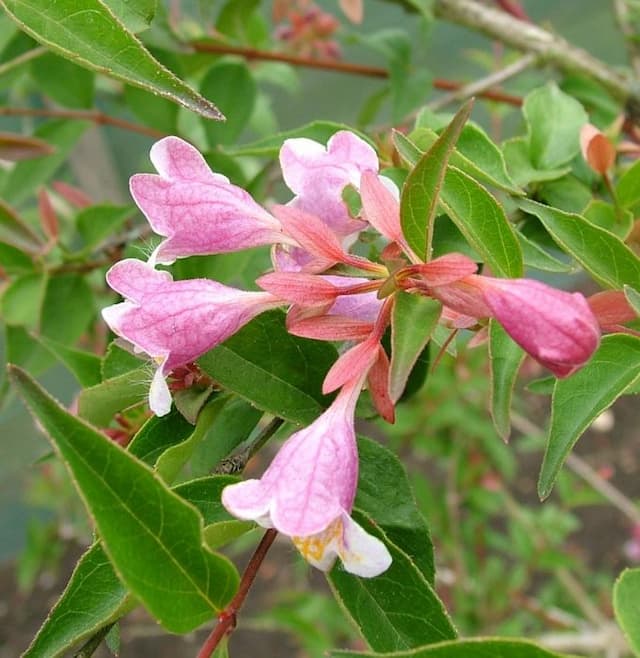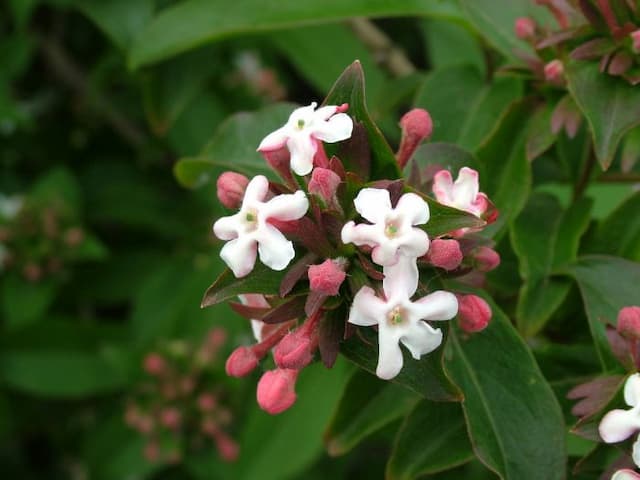Pincushion Flower Scabiosa 'Vivid Vi' (PBR)

ABOUT
The Scabiosa 'Vivid Vi', commonly known as the pincushion flower, is notable for its captivating blossoms that bear a striking resemblance to diminutive pincushions, hence its name. The flowers are a standout with their luscious shades of violet that elegantly bloom atop slender, wiry stems. These charming floral globes are composed of compact clusters of smaller florets, each featuring a tuft of stamens bursting forth from the center, adding depth and texture to the flower's overall appearance. The pincushion flower's foliage provides a lush backdrop for its enchanting blooms. The leaves are typically green with a soft, velvety texture, forming a low mound or rosette shape at the base of the stems. The leaves can be somewhat lobed or deeply divided, often with a slightly greyish tint, which complements the vivid violet of the flowers. This plant's aesthetic lends itself well to cottage gardens, attracting pollinators such as bees and butterflies who find the nectar-rich blooms irresistible. Its ornamental quality also makes it popular for cut flower arrangements, where its unique blossoms can add an eye-catching element to bouquets and floral decor. The pincushion flower is a true standout because of its vibrant color, intricate flower structure, and graceful stems, making it a favorite among garden enthusiasts seeking to add a splash of color and interest to their outdoor spaces.
About this plant
 Names
NamesFamily
Caprifoliaceae
Synonyms
Pincushion Flower, Scabious
Common names
Scabiosa 'Vivid Vi' (PBR)
 Toxicity
ToxicityTo humans
The Scabiosa, also known as pincushion flower, is generally not considered toxic to humans. There is no widespread documentation of poisonous effects from ingesting this plant. However, as with many plants, individual allergies or sensitivities can occur. If a person were to consume parts of the Scabiosa and had a sensitivity to it, they might experience mild gastrointestinal upset or an allergic reaction, though this is not common.
To pets
The Scabiosa, commonly known as pincushion flower, is not typically considered toxic to pets. There is no significant evidence to suggest that pets, such as dogs or cats, would experience poisoning from ingesting parts of this plant. Nonetheless, ingestion of non-food plants can sometimes result in mild stomach upset for pets due to the plant material's irritation, even if the plant is not inherently poisonous.
 Characteristics
CharacteristicsLife cycle
Perennials
Foliage type
Deciduous
Color of leaves
Green
Flower color
Violet
Height
1-1.5 feet (30-45 cm)
Spread
1-1.5 feet (30-45 cm)
Plant type
Herb
Hardiness zones
4-9
Native area
Europe
Benefits
 General Benefits
General Benefits- Attracts pollinators: Scabiosa 'Vivid Violet' is known to attract bees, butterflies, and other beneficial insects to the garden.
- Long blooming period: This variety typically has a long flowering season, providing color and interest in the garden for an extended period.
- Drought tolerant: Once established, it can tolerate periods of drought, making it suitable for water-conservative landscapes.
- Low maintenance: Requires minimal care beyond occasional deadheading to prolong blooming and maintain a neat appearance.
- Versatile garden use: Can be used in borders, cottage gardens, rock gardens or as cut flowers in floral arrangements.
- Deer resistant: Less palatable to deer, which can help prevent damage to the plant in areas with deer populations.
- Compact growth habit: Its compact size makes it suitable for smaller gardens or for growing in containers.
- Cold hardy: Capable of withstanding colder temperatures, making it suitable for a variety of climates and extending its growing range.
 Medical Properties
Medical PropertiesThis plant is not used for medical purposes.
 Air-purifying Qualities
Air-purifying QualitiesThis plant is not specifically known for air purifying qualities.
 Other Uses
Other Uses- Photography Backdrops: The beautiful purple blooms of the Scabiosa 'Vivid Vi' can serve as an excellent backdrop for macro and nature photography, offering a pop of color and a soft, romantic setting.
- Artistic Inspiration: Artists and illustrators may take inspiration from the intricate petals and rich color of the Scabiosa 'Vivid Vi' for botanical drawings, paintings, or fabric designs.
- Educational Tool: Educators can use the plant to teach children about pollination, as its flowers are known to attract bees and butterflies.
- Plant Dye: The petals of Scabiosa 'Vivid Vi' can be used to create natural dyes for textiles, offering hues ranging from light lavender to deeper purple shades.
- Floral Arrangement Workshops: These flowers can be featured in workshops teaching the art of floral arrangement, as their structure and color add depth and interest to bouquets.
- Garden Photography Prop: The Scabiosa 'Vivid Vi' is ideal for creating picturesque garden scenes, serving as a lush, vivid subject for garden photographers and enthusiasts.
- Culinary Garnish: The edible petals can be used to add a touch of elegance to salads and desserts, although this use should be prefaced with caution regarding potential allergies.
- Crafting Material: Dried Scabiosa 'Vivid Vi' flowers can be incorporated into various crafts, such as making bookmarks, pressed flower art, or even natural potpourri.
- Special Events: Clusters of Scabiosa 'Vivid Vi' can be used to decorate venues for events like weddings or parties, bringing a natural and sophisticated aesthetic to the space.
- Home Decor: Fresh or dried Scabiosa 'Vivid Vi' can be used in floral displays inside homes to add a pop of natural color and vibrancy to interior decorating.
Interesting Facts
 Feng Shui
Feng ShuiThe Pincushion Flower is not used in Feng Shui practice.
 Plant Symbolism
Plant Symbolism- Love and Admiration: Often found in bouquets, Scabiosa flowers are known to symbolize love and admiration, making them perfect for gifting to someone you deeply care for.
- Attractiveness: With their unique and eye-catching blooms, Scabiosa flowers symbolize attractiveness and the captivating beauty of both the giver and receiver.
- Pure Heart: The delicate nature of the Scabiosa 'Vivid Vi' suggests purity of heart, which is why it's sometimes used to convey sincere emotions and intentions.
- Long-lasting Affection: As perennial plants, Scabiosa 'Vivid Vi' can represent long-lasting affection and enduring relationships, often included in anniversaries or long-term commitment celebrations.
 Water
WaterPincushion flowers like the Scabiosa 'Vivid Vi' should be watered deeply, allowing the soil to dry out slightly between waterings to encourage strong root growth. In general, watering once a week with about 0.5 gallons per plant should suffice, depending on the climate and soil conditions. During hot summer months or dry periods, you may need to water more frequently, monitoring the soil moisture level.
 Light
LightPincushion flowers prefer a sunny location with at least 6 hours of direct sunlight each day. They thrive in a spot that receives full sun to partial shade. Ensure that the plant is placed where it can receive ample morning sunlight, which is less harsh than the intense afternoon sun.
 Temperature
TemperaturePincushion flowers do best in temperatures ranging from 40 to 85 degrees Fahrenheit. They can tolerate brief dips below freezing, but sustained temperatures below 40 degrees can be harmful. The ideal growing conditions for a Scabiosa 'Vivid Vi' would be where nighttime temperatures do not fall below 40 degrees and daytime temperatures hover around 70 degrees Fahrenheit.
 Pruning
PruningPincushion flowers should be pruned to remove spent blooms and encourage continuous flowering. Deadhead regularly to keep the plant looking tidy and to stimulate new growth. An annual pruning, cutting back the foliage to a few inches above ground in late fall or early winter, can help promote vigorous growth in the following season.
 Cleaning
CleaningAs needed
 Soil
SoilThe best soil mix for the pincushion flower (Scabiosa 'Vivid Vi') is well-draining soil with plenty of organic matter. A mixture of loam, peat, and sharp sand is ideal, providing good aeration and moisture retention. Adjust the soil pH to be slightly alkaline, between 7.0 and 7.5, for optimal growth.
 Repotting
RepottingPincushion flowers (Scabiosa 'Vivid Vi') typically do not need frequent repotting. It is best to repot these perennials every 2-3 years to refresh the soil and accommodate root growth. Choose the spring season for repotting, as the plant is coming into active growth.
 Humidity & Misting
Humidity & MistingPincushion flowers (Scabiosa 'Vivid Vi') prefer moderate humidity levels but are quite adaptable to different conditions. They thrive in environments with average humidity, without the need for any special adjustments.
 Suitable locations
Suitable locationsIndoor
Provide bright light and well-draining soil.
Outdoor
Plant in full sun, in well-draining soil.
Hardiness zone
4-9 USDA
 Life cycle
Life cycleScabiosa 'Vivid Violet', commonly known as pincushion flower, begins its life cycle as a seed which germinates within a couple of weeks under appropriate conditions of warmth and moisture. The seedling emerges and develops a rosette of basal leaves, with true leaves appearing shortly thereafter. As the plant matures, it develops a sturdy stem and a deep root system that helps it to survive periods of drought. The pincushion flower enters the flowering stage in late spring to early summer, producing numerous violet, cushion-like inflorescences atop slender stems that are attractive to pollinators such as bees and butterflies. After pollination, the flowers produce seeds that can be dispersed by wind or wildlife, concluding its reproductive cycle. During the winter in colder climates, Scabiosa 'Vivid Violet' may die back, entering a period of dormancy, but it is a perennial and will typically regrow from its rootstock the following spring.
 Propogation
PropogationPropogation time
Spring-Early Summer
Scabiosa 'Vivid Violet', commonly known as pincushion flower, can be propagated by root cuttings or seed, but the most popular method is by division, usually performed in early spring or autumn. To propagate by division, carefully dig up the plant and gently separate the clumps into smaller pieces, ensuring that each new section has a portion of roots attached. These divisions should then be immediately replanted into well-drained soil, spaced about 12 inches (approximately 30 cm) apart to allow for adequate growth. Water the new plantings thoroughly to help establish the roots. This method of propagation allows gardeners to quickly and efficiently produce new plants that are true to the parent's characteristics.







![Himalayan honeysuckle [Golden Lanterns]](/_next/image?url=https%3A%2F%2Fplants-admin.emdemapps.com%2Fimages%2Fplants%2F%2Fimages%2F604b55302cc87.png&w=640&q=75)

